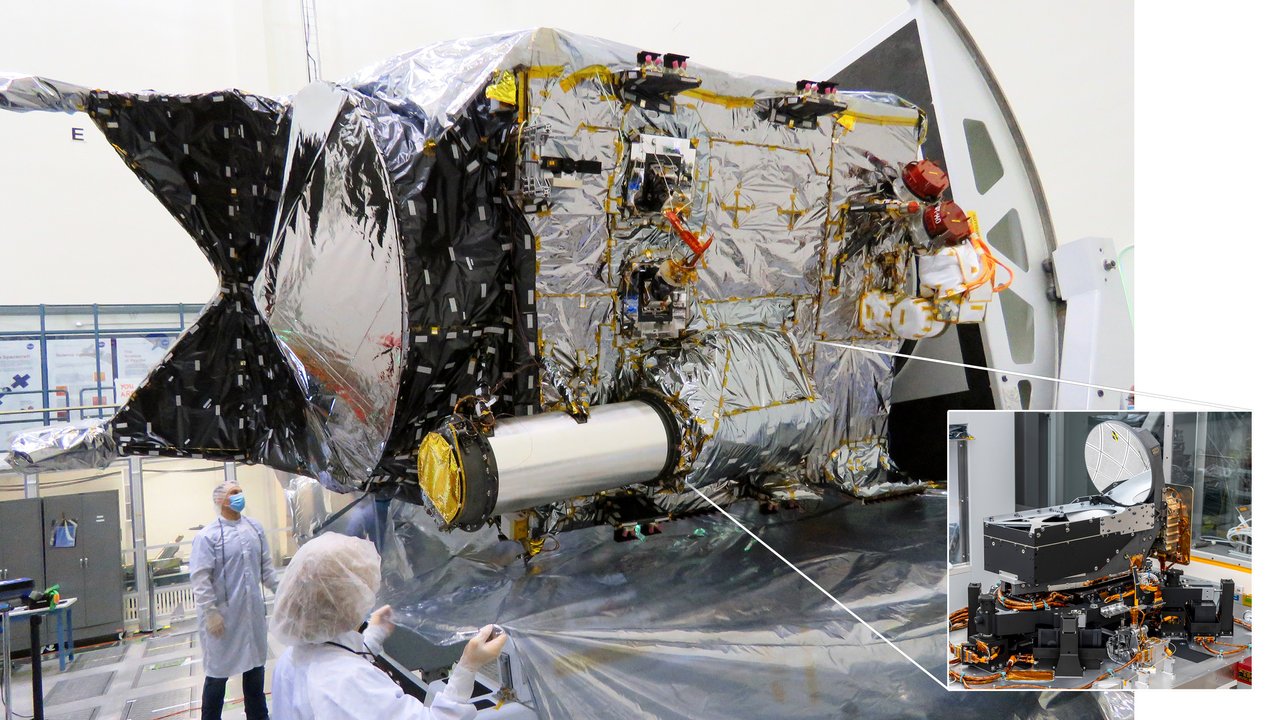NASA's Psyche asteroid mission will test next-gen laser communications in space

This October – if all remains on schedule – NASA's Psyche mission will lift off and begin its voyage to the metal-rich asteroid of the same name, which some astronomers believe is the remnant of an ancient protoplanet. But before the Psyche even reaches, well, Psyche, the probe will serve another purpose: demonstrating what some engineers hope is the next generation of sending data between spacecraft and ground control.
Deep Space Optical Communications (DSOC), as NASA calls it, eschews the radio waves of past broadcast methods in favor of near-infrared laser light. This is because a laser terminal is slimmer and lighter than a radio antenna and, as laser light has shorter wavelengths than radio signals, an optical beam can transmit more information.
"DSOC was designed to demonstrate 10 to 100 times the data-return capacity of state-of-the-art radio systems used in space today," Abi Biswas, a technologist at NASA's Jet Propulsion Laboratory (JPL), said in a statement.
Related: NASA's Psyche mission to metal asteroid undergoes vital testing for October launch
However, DSOC won't be NASA’s first go at putting a communication system that uses light.
A decade earlier, NASA and the European Space Agency (ESA) shot about 600 megabytes of data from lunar orbit back to Earth with a laser link. But DSOC's lasers, shooting from JPL's Table Mountain Facility that's nestled in the northeast Los Angeles mountains, will go much farther. It's expected to travel as far as 300 million kilometers (200 million miles).
Aboard the Psyche craft is a complex transceiver. For the first two years of the probe's flight, this transceiver will autonomously look for and lock onto the beam from Table Mountain. A camera attached to an 8.6-inch (22-centimeter) aperture telescope will count how many photons fill the beam. Then, the transceiver will fire its own laser, aiming for Hale Telescope at Palomar Observatory, northeast of San Diego.
Breaking space news, the latest updates on rocket launches, skywatching events and more!
This test won't be easy — scientists will have to adjust for Psyche's own vibrations, not to mention control for the inevitable lag they'll get from shooting a laser beam through space. That lag could account for several light-minutes.
But if this test proves a success, NASA hopes to use DSOC on exciting future missions — for instance, a historic crewed voyage to Mars.

Rahul Rao is a graduate of New York University's SHERP and a freelance science writer, regularly covering physics, space, and infrastructure. His work has appeared in Gizmodo, Popular Science, Inverse, IEEE Spectrum, and Continuum. He enjoys riding trains for fun, and he has seen every surviving episode of Doctor Who. He holds a masters degree in science writing from New York University's Science, Health and Environmental Reporting Program (SHERP) and earned a bachelors degree from Vanderbilt University, where he studied English and physics.
